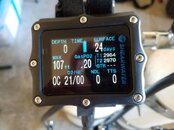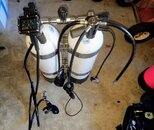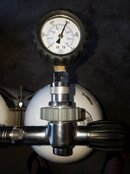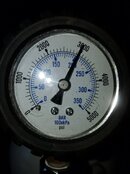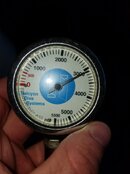Good news - Dive Log for iPhone was updated on Jan 6th and now fully supports the Perdix AI. Here is some info I got from them via e-mail:Thanks for the link. I chimed in as well.. Hopefully they will be quick on a minor upgrade like this..
I didn't make it before the beta was closed but I'm looking forward to checking it out.
"Yes, the Perdix AI is fully supported by the current version of Dive Log (2.2.8). It does download the pressure sample data from both possible transmitters and enters the start and end pressure of the “main” tank (the first transmitter) and captures the pressure samples from both transmitters and saves them in the database. Right now Dive Log does not plot the pressure samples on the profile graph (we will add that eventually) however if you sync the data to any of the compatible desktop apps you will see the pressure samples plotted on the graph (not the ability to plot pressure samples is independent of the AI and applies to any dives that have pressure samples store in the database).
Air Consumption Rate is also calculated by Dive Log as long as the required information is entered for the dive. In addition to the start and end pressures, the average depth of the dive (which we calculate from the profile data data or you can manually enter) and the dive time you need to enter the size (and in the case of US and Canadian sized tanks the working pressure) of the tank(s) used.
We have one additional setting available in Dive Log that allows you to ignore “surface samples”. This can be handy for die computers like the Perdix AI that allow you to keep recording samples long after you surface (in case you are planning to go back down again and continue the dive) so that your air consumption calculation does not include those surface samples (this helps you get the same values calculated that you might see in other programs).
Note that Air Consumption Rate can be calculated two ways, one is more appropriate for keeping track of during the dive (this is usually called SAC) and the other is more useful as a “post mortem” so that you can compare one dive to the next (RMV). We calculate RMV and display that in Dive Log currently. Many people use the terms interchangeable (in fact, when I started diving we only calculated RMV and it was called SAC). Here is a blog post that talks about more about this particularly in our Mac application (which can calculate both SAC and RMV):
More Mobile Software - Blog
and here is a general discussion of how to calculate the two values:
NWGratefulDiver.com
and finally a DAN article on the same subject:
Alert Diver | Estimating Your Air Consumption
I hope this is helps. Please let me know if you have any additional questions.
Best Regards,
Greg
Greg McLaughlin
More Mobile Software
www.moremobilesoftware.com"
Air Consumption Rate is also calculated by Dive Log as long as the required information is entered for the dive. In addition to the start and end pressures, the average depth of the dive (which we calculate from the profile data data or you can manually enter) and the dive time you need to enter the size (and in the case of US and Canadian sized tanks the working pressure) of the tank(s) used.
We have one additional setting available in Dive Log that allows you to ignore “surface samples”. This can be handy for die computers like the Perdix AI that allow you to keep recording samples long after you surface (in case you are planning to go back down again and continue the dive) so that your air consumption calculation does not include those surface samples (this helps you get the same values calculated that you might see in other programs).
Note that Air Consumption Rate can be calculated two ways, one is more appropriate for keeping track of during the dive (this is usually called SAC) and the other is more useful as a “post mortem” so that you can compare one dive to the next (RMV). We calculate RMV and display that in Dive Log currently. Many people use the terms interchangeable (in fact, when I started diving we only calculated RMV and it was called SAC). Here is a blog post that talks about more about this particularly in our Mac application (which can calculate both SAC and RMV):
More Mobile Software - Blog
and here is a general discussion of how to calculate the two values:
NWGratefulDiver.com
and finally a DAN article on the same subject:
Alert Diver | Estimating Your Air Consumption
I hope this is helps. Please let me know if you have any additional questions.
Best Regards,
Greg
Greg McLaughlin
More Mobile Software
www.moremobilesoftware.com"




